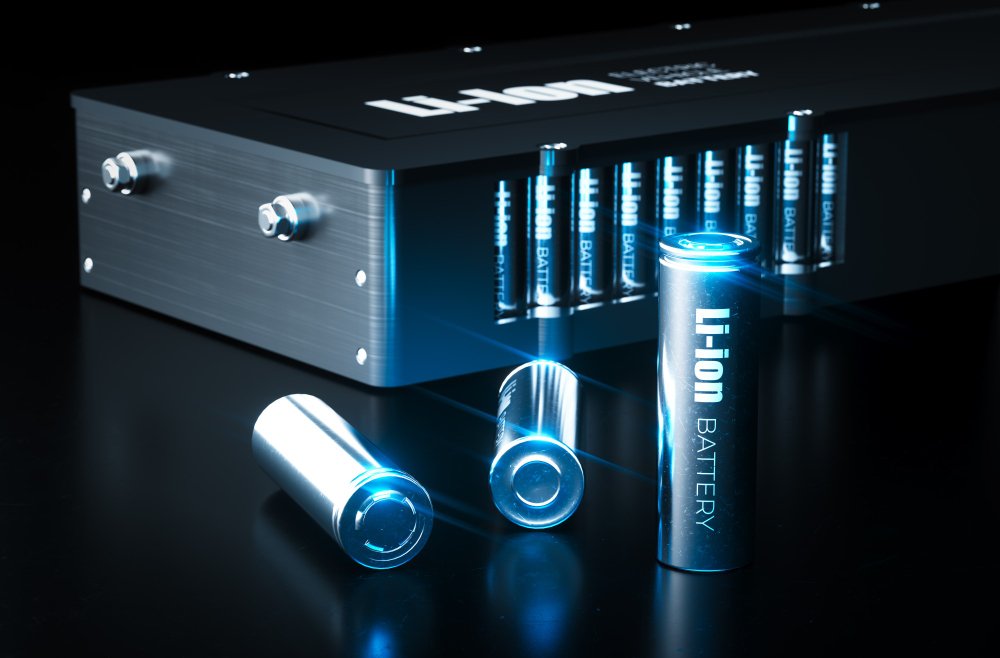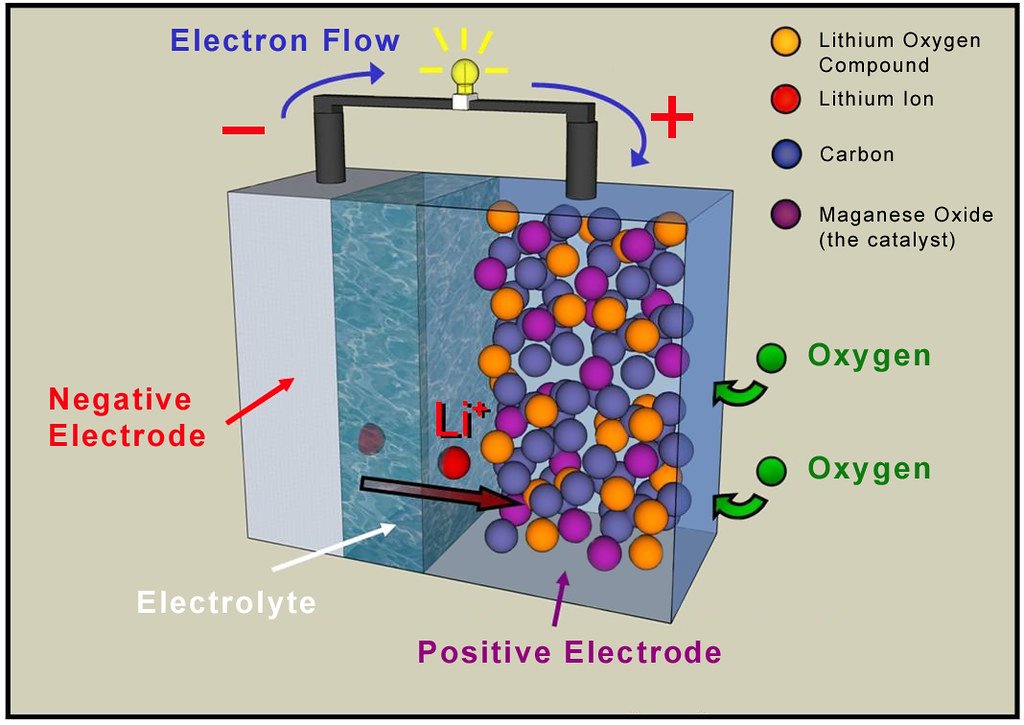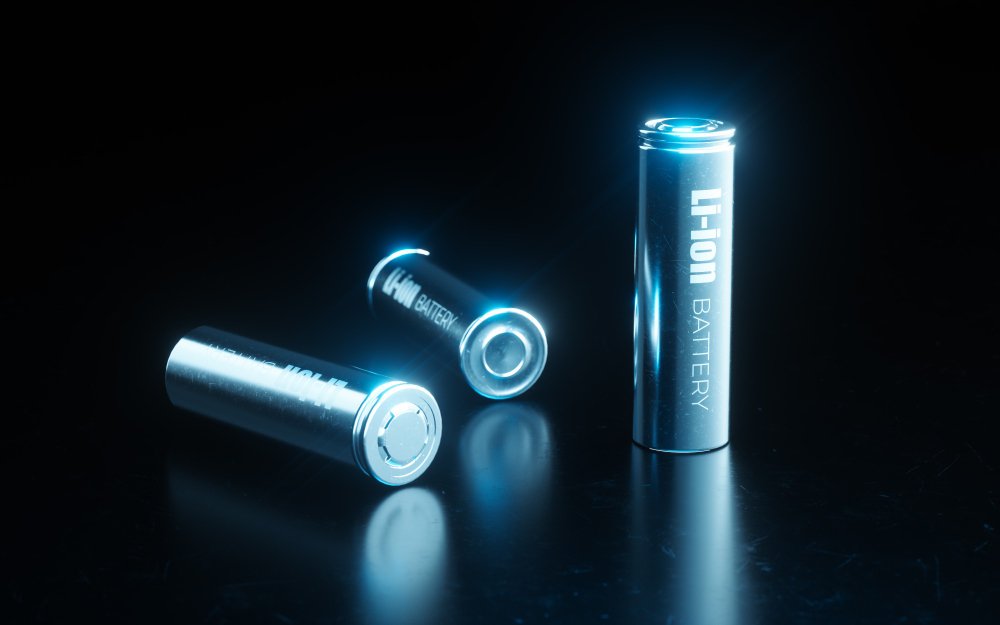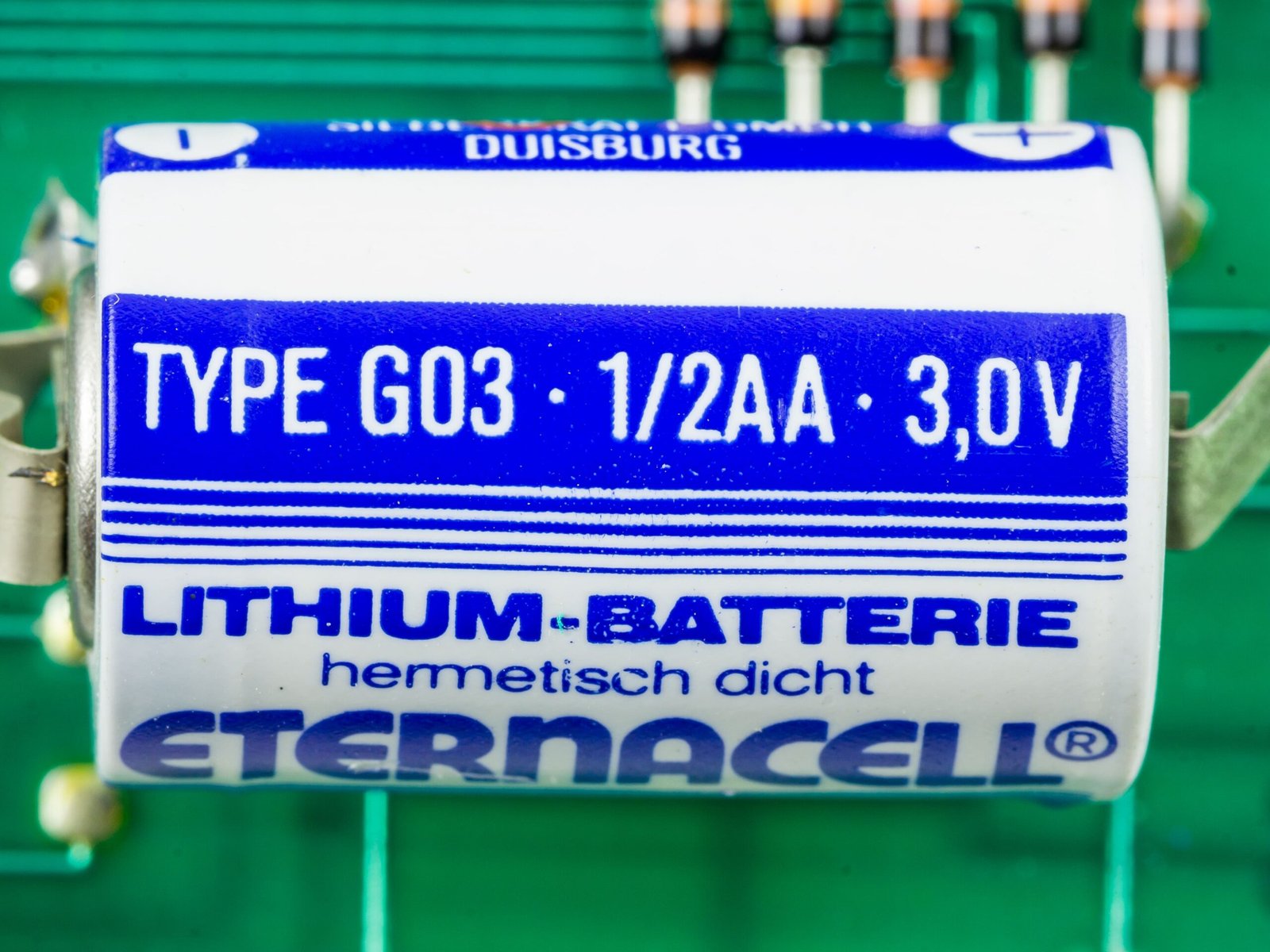Everything You Need To Know About Lithium Batteries
- 1 Composition and Working Principle
- 2 Working Principle of Lithium Batteries
- 3 Types of Lithium Batteries
- 3.1 1. Lithium-Ion (Li-ion) Batteries:
- 3.2 2. Lithium Polymer (LiPo) Batteries:
- 3.3 3. Lithium Iron Phosphate (LiFePO4) Batteries:
- 4 Advantages of Lithium Batteries
- 4.1 1. High Energy Density:
- 4.2 2. Long Lifespan:
- 4.3 3. Fast Charging Times:
- 4.4 4. Low Self-Discharge Rate:
- 4.5 5. Wide Operating Temperature Range:
- 4.6 6. Versatility and Customization:
- 4.7 7. Environmental Benefits:
- 5 Applications of Lithium batteries
- 5.1 Consumer Electronics:
- 5.2 Electric Vehicles (EVs):
- 5.3 Renewable Energy Storage:
- 5.4 Medical Devices:
- 5.5 Aerospace and Defense:
- 5.6 Industrial and Power Tools:
- 5.7 Marine and Offshore Applications:
- 6 Challenges and Safety Concerns
- 6.1 1. Thermal Runaway:
- 6.2 2. Physical Damage:
- 6.3 3. Overcharging and Overdischarging:
- 6.4 4. Manufacturing Defects:
- 6.5 5. Environmental Impact:
- 6.6 6. Transportation and Storage:
- 6.7 7. Regulatory Compliance:
- 7 Research and Future Developments
- 7.1 1. Advanced Electrode Materials:
- 7.2 2. Solid-State Electrolytes:
- 7.3 3. High-Energy-Density Designs:
- 7.4 4. Fast-Charging Technologies:
- 7.5 5. Artificial Intelligence and Battery Management:
- 7.6 6. Recycling and Sustainability:
- 7.7 7. Grid-Scale Energy Storage:
- 8 Pros and cons of lithium batteries:
- 9 Conclusion
- 10 FAQs:
- Efficient Power: Lithium batteries offer high energy density and fast charging times, making them ideal for portable electronics and electric vehicles. This enhances convenience and mobility.
- Safety and Sustainability: While facing challenges such as thermal runaway and environmental impact, ongoing research focuses on enhancing safety measures and developing sustainable recycling methods, ensuring a safer and more eco-friendly energy solution.
- Future Innovation: Advancements in electrode materials, solid-state electrolytes, and recycling technologies promise even higher energy densities, faster charging, and improved sustainability, driving innovation toward a greener and more efficient energy future.
Lithium batteries have become ubiquitous in modern life, powering everything from smartphones to electric vehicles. They are rechargeable batteries that use lithium ions to store and release energy. Their widespread adoption is due to their high energy density, long lifespan, and lightweight nature compared to other rechargeable batteries. Let’s experience reliable power on the go with Sunyee’s Lithium Battery.
Composition and Working Principle
Lithium batteries comprise several vital components, each playing a crucial role in their functionality. These components include the cathode, anode, separator, electrolyte, and current collectors.
- Cathode: The cathode is typically made of a lithium metal oxide compound, such as lithium cobalt oxide (LiCoO2), lithium manganese oxide (LiMn2O4), or lithium iron phosphate (LiFePO4). It serves as the positive electrode during battery operation.
- Anode: The anode is usually made of carbon, such as graphite, and is the negative electrode. During charging, lithium ions from the cathode are stored in the anode.
- Separator: The separator is a thin, porous membrane between the cathode and anode to prevent short circuits while allowing lithium ions to flow.
- Electrolyte: The electrolyte is a solution or polymer that facilitates the movement of lithium ions between the cathode and anode during charge and discharge cycles.
- Current Collectors: These are conductive materials, often made of copper or aluminium foil, that collect and distribute the electrical current generated by the battery.
Working Principle of Lithium Batteries
The operation of lithium batteries involves the movement of lithium ions between the cathode and anode during charge and discharge cycles. Electrochemistry principles govern this process.
- Charging Process: An external voltage is applied to the battery during charging, causing lithium ions to migrate from the cathode through the electrolyte to the anode. At the anode, the lithium ions are stored within the carbon structure. Meanwhile, electrons flow through the external circuit to the cathode, combine with lithium ions, and are incorporated into the cathode material.
- Discharging Process: When the battery discharges, the stored lithium ions in the anode move back through the electrolyte to the cathode. This movement of ions generates an electrical current that can power external devices. Electrons flow from the anode through the external circuit to the cathode, completing the electrical circuit.
- Reversible Process: The charging and discharging processes are reversible, allowing lithium batteries to be recharged and reused multiple times. However, over time, factors such as electrode degradation and side reactions can affect the battery’s capacity and performance.
Understanding lithium batteries’ composition and working principle is essential for optimizing their performance, enhancing safety, and developing more efficient battery technologies for various applications.
Types of Lithium Batteries
1. Lithium-Ion (Li-ion) Batteries:
Li-ion batteries are the most common lithium in consumer electronics, electric vehicles, and grid energy storage systems. They typically consist of a lithium cobalt oxide (LiCoO2) cathode, graphite anode, and liquid electrolyte. Li-ion batteries offer high energy density, lightweight design, and low self-discharge rates. They are known for their long cycle life and are suitable for high-energy storage capacity applications.
2. Lithium Polymer (LiPo) Batteries:
LiPo batteries utilize a polymer electrolyte instead of a liquid electrolyte used in traditional Li-ion batteries. They are commonly found in portable electronic devices such as smartphones, tablets, and remote-controlled aircraft. LiPo batteries can be manufactured in various shapes and sizes, making them suitable for slim and compact devices. They offer higher discharge rates than-ion batteries, making them ideal for high-power output applications
3. Lithium Iron Phosphate (LiFePO4) Batteries:
LiFePO4 batteries use lithium iron phosphate as the cathode material, offering improved thermal stability and safety compared to other lithium battery types. They are commonly used in applications where safety and long cycle life are paramount, such as electric vehicles, solar energy storage systems, and medical devices. LiFePO4 batteries have a lower energy density compared to Li-ion batteries but compensate with better thermal stability, reduced risk of thermal runaway, and longer lifespan. They are known for their excellent performance in high-temperature environments and are less prone to thermal degradation during charging and discharging cycles.
Advantages of Lithium Batteries
1. High Energy Density:
Lithium batteries offer one of the highest energy densities among rechargeable battery technologies. This means they can store significant energy in a relatively small and lightweight package, making them ideal for portable electronic devices and electric vehicles.
2. Long Lifespan:
Compared to other rechargeable batteries, lithium batteries typically have a longer lifespan. This means they can undergo more charge and discharge cycles before experiencing significant performance degradation, resulting in cost savings over the battery’s lifetime.
3. Fast Charging Times:
Lithium batteries can charge faster than other battery chemistries. This feature is particularly beneficial for devices and applications where quick recharge times are essential, such as smartphones, laptops, and electric vehicles.
4. Low Self-Discharge Rate:
Lithium batteries exhibit a low self-discharge rate, meaning they retain their charge for extended periods when not used. Compared to other types of batteries, this makes them suitable for applications requiring infrequent use or standby power.
5. Wide Operating Temperature Range:
Lithium batteries can operate effectively over a wide temperature range, making them suitable for use in diverse environmental conditions. This feature is essential for outdoor electronics and electric vehicles exposed to extreme temperatures.
6. Versatility and Customization:
Lithium battery technology offers flexibility in design and configuration, allowing customization to meet various applications’ specific power and size requirements. This versatility makes them suitable for consumer electronics, industrial equipment, and energy storage systems.
7. Environmental Benefits:
Due to their rechargeability, lithium batteries are more environmentally friendly than traditional disposable batteries. They help reduce the consumption of disposable batteries, leading to less waste and lower environmental impact.
Understanding the advantages of lithium batteries is crucial for selecting the most appropriate power source for various applications, considering factors such as energy density, lifespan, charging capabilities, and environmental impact.
Applications of Lithium batteries
Lithium batteries are extensively used across a wide array of applications due to their unique combination of high energy density, long lifespan, and versatility. These batteries have revolutionized numerous industries and continue to drive innovation in various fields.
Consumer Electronics:
One of the most prevalent applications of lithium batteries is in consumer electronics. Devices such as smartphones, laptops, tablets, digital cameras, and wearable technology heavily rely on lithium batteries for their compact size, lightweight design, and long-lasting power. The high energy density of lithium batteries allows these devices to operate for extended periods between charges, providing users with convenience and portability.
Electric Vehicles (EVs):
Lithium batteries play a crucial role in advancing electric vehicles (EVs). Their high energy density enables EVs to achieve longer driving ranges on a single charge, making them more practical for daily use. Lithium batteries power the propulsion systems of electric cars, buses, trucks, and bikes, reducing greenhouse gas emissions and dependence on fossil fuels in the transportation sector.
Renewable Energy Storage:
Lithium batteries serve as energy storage solutions in renewable energy systems, such as solar and wind power installations. These batteries store excess energy generated during peak production periods and release it when demand is high or renewable energy sources are unavailable. Lithium batteries enhance the reliability and stability of renewable energy systems by providing backup power and enabling grid balancing.
Medical Devices:
Lithium batteries are widely used in various medical devices and equipment, from portable defibrillators and infusion pumps to hearing aids and pacemakers. Lithium batteries’ long lifespan and high energy density ensure reliable performance and prolonged operation of critical medical devices, improving patient care and healthcare outcomes.
Aerospace and Defense:
Lithium batteries are employed in various aerospace and defence applications, including satellites, uncrewed aerial vehicles (UAVs), military equipment, and space missions. Their lightweight and compact nature makes them well-suited for aerospace applications where minimizing weight and maximizing energy storage capacity are paramount.
Industrial and Power Tools:
Lithium batteries have become increasingly prevalent in industrial settings and power tools due to their high power output, fast charging capabilities, and durability. They power cordless drills, saws, impact wrenches, and other handheld tools, providing workers greater mobility and convenience in construction, manufacturing, and maintenance tasks.
Marine and Offshore Applications:
Lithium batteries are utilized in marine and offshore environments for various purposes, including powering marine vessels, offshore platforms, and underwater vehicles. Their ability to withstand harsh marine conditions and high energy density makes them suitable for applications where reliability and performance are critical.
Challenges and Safety Concerns
1. Thermal Runaway:
One of the primary safety concerns of lithium batteries is the risk of thermal runaway. This occurs when the battery undergoes an uncontrolled increase in temperature, leading to the release of flammable electrolytes and gases, potentially resulting in fires or explosions. Overcharging, short circuits, physical damage, or manufacturing defects can trigger thermal runaway.
2. Physical Damage:
Lithium batteries are sensitive to physical damage, such as punctures, crushes, or impacts, which can compromise their integrity and lead to internal short circuits. External damage to the battery casing or electrodes can expose reactive components, increasing the risk of thermal runaway and safety hazards.
3. Overcharging and Overdischarging:
Overcharging or over-discharging lithium batteries beyond their recommended voltage limits can cause irreversible damage to the battery cells, leading to performance degradation, reduced capacity, and safety hazards. Proper charging and discharging protocols, including voltage and current limitations, are essential to prevent overcharging-related safety issues.
4. Manufacturing Defects:
Defects in the manufacturing process, such as impurities in electrode materials, incomplete cell assembly, or inadequate quality control measures, can compromise the safety and performance of lithium batteries. These defects may lead to internal short circuits, electrolyte leakage, or uneven distribution of lithium ions, increasing the risk of thermal runaway and safety incidents.
5. Environmental Impact:
Production, use, and disposal of lithium batteries can have environmental implications, including resource extraction, energy consumption, and waste management. The extraction of lithium and other raw materials for battery production can result in habitat disruption, water pollution, and carbon emissions. Additionally, improper disposal of lithium batteries can lead to environmental contamination and pose hazards to ecosystems and human health.
6. Transportation and Storage:
Transportation and storage of lithium batteries present safety challenges due to their potential for thermal runaway and fire hazards. Regulatory requirements and safety standards govern the packaging, labelling, and handling of lithium batteries during transportation to mitigate the risk of incidents. Proper storage conditions, including temperature control and ventilation, are essential to minimize safety risks associated with lithium battery storage.
7. Regulatory Compliance:
The safety and transportation regulations governing the use and transportation of lithium batteries vary across regions and jurisdictions. Compliance with these regulations, such as UN/DOT regulations, IEC standards, and air transport regulations, is essential to ensure the safe handling, transportation, and disposal of lithium batteries, particularly in commercial and industrial settings.
Addressing the challenges and safety concerns associated with lithium batteries requires ongoing research, development, and implementation of safety measures, regulations, and best practices throughout the lifecycle of lithium battery production, use, and disposal.
Research and Future Developments
1. Advanced Electrode Materials:
Researchers are exploring novel electrode materials to enhance lithium batteries’ performance and energy density. These materials include silicon-based anodes, sulfur cathodes, and metal oxide composite electrodes. By incorporating these materials into lithium battery designs, researchers aim to increase energy storage capacity, improve cycling stability, and reduce costs.
2. Solid-State Electrolytes:
Solid-state electrolytes offer potential advantages over liquid electrolytes regarding safety, stability, and energy density. Researchers are investigating solid-state electrolyte materials, such as ceramics, polymers, and composite materials, to replace conventional liquid electrolytes in lithium batteries. Solid-state electrolytes can mitigate safety risks associated with thermal runaway and improve battery performance under extreme conditions.
3. High-Energy-Density Designs:
Efforts are underway to develop lithium battery designs with higher energy densities to meet the increasing demand for longer-lasting and more powerful energy storage solutions. This includes optimizing electrode structures, electrolyte formulations, and cell architectures to maximize energy storage capacity while maintaining safety and reliability.
4. Fast-Charging Technologies:
Lithium battery research focuses on Improving charging times, particularly for electric vehicles and portable electronics. Researchers are exploring fast-charging technologies such as advanced electrode materials, innovative cell designs, and intelligent charging algorithms to reduce charging times while maintaining battery longevity and safety.
5. Artificial Intelligence and Battery Management:
Integrating artificial intelligence (AI) and machine learning techniques into battery management systems (BMS) holds promise for optimizing battery performance, predicting battery degradation, and extending battery lifespan. AI algorithms can analyze battery data in real time to optimize charging profiles, detect anomalies, and improve overall battery efficiency and reliability.
6. Recycling and Sustainability:
As the demand for lithium batteries grows, there is an increasing focus on recycling and sustainability measures to minimize environmental impact and resource depletion. Researchers are developing efficient recycling technologies to recover valuable materials from spent lithium batteries, such as lithium, cobalt, and nickel, for reuse in new battery production. Additionally, efforts are underway to design batteries with eco-friendly and recyclable materials to reduce waste and environmental footprint.
7. Grid-Scale Energy Storage:
Lithium batteries are increasingly being deployed for grid-scale energy storage applications to support renewable energy integration, stabilize the grid, and improve energy reliability. Future developments in lithium battery technology aim to enhance grid-scale energy storage systems’ performance, scalability, and cost-effectiveness, enabling greater integration of renewable energy sources and reducing reliance on fossil fuels.
Advancements in lithium battery research and development drive innovation in energy storage technology, paving the way for more efficient, sustainable, and versatile battery solutions across various industries and applications.
Pros and cons of lithium batteries:
| Pros | Cons |
|---|---|
| High energy density | Risk of thermal runaway |
| Long lifespan | Sensitive to physical damage |
| Fast charging times | Overcharging and over-discharging risks |
| Low self-discharge rate | Manufacturing defects |
| Wide operating temperature range | Environmental impact |
| Versatility and customization | Transportation and storage challenges |
| Environmental benefits (rechargeable) | Regulatory compliance requirements |
| Limited availability of raw materials |
Conclusion
Lithium batteries have revolutionized how we power our devices and vehicles, offering high energy density, long lifespan, and fast charging times. Despite some challenges and safety concerns, ongoing research and development efforts continue to improve lithium battery technology, paving the way for a more sustainable and electrified future.
FAQs:
Are lithium batteries safe?
Lithium batteries are generally safe for everyday use but can pose risks like thermal runaway if mishandled. Proper charging, storage, and disposal practices are crucial for safety.
How long do lithium batteries last?
Lithium batteries have a longer lifespan compared to other battery types, enduring hundreds to thousands of charge cycles before significant degradation occurs, depending on usage patterns and conditions.
Are lithium batteries environmentally friendly?
While rechargeable lithium batteries reduce waste compared to disposable options, their production and disposal can have environmental implications. Efforts are underway to improve recycling methods and develop greener battery technologies





















